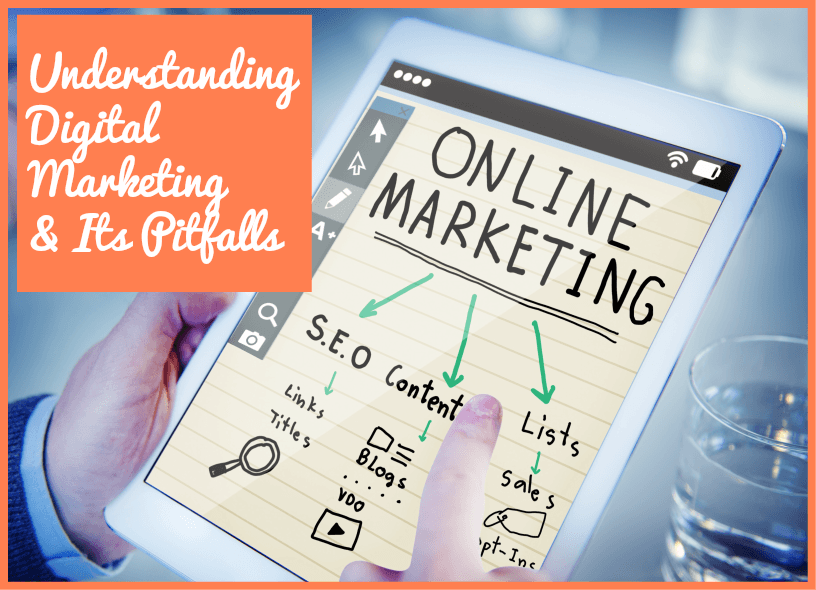
Understanding Digital Marketing And Its Pitfalls
Digital marketing has been and is still challenging the way marketing is seen from the work floor all the way up to the board room. The most fundamental change is the way (some) digital channels provide a measurable framework in which investment can be linked to returns.
This focus on so-called ‘direct response’ channels is not at all unexpected as the financial operators within companies, usually in the form of a CFO, are pulling the purse strings of marketing budgets more and more.
The Problem Of Marketing Budgets
On itself, this wouldn’t be much of an issue, but as marketing budgets are being stretched more and more, the pressure to perform from out of these budgets will tilt the investment towards short term results rather than long term building.
Simply speaking, marketing budget that used to be for brand building purposes, now is being cannibalized by the allocation of the same budget for direct sales purposes.
As companies are feeling the pinch, or are being pressured by shareholders to increase profits, any long term planning will make way for short term gains.
KPIs As A Blessing And A Curse
You’ll notice this happening when every investment will start getting strict KPIs (key performance indicators) that will determine the success and failure of each. And at times those KPIs won’t even make sense or will feel harsh or tone-deaf in relation to the marketing channel at hand. This is why digital channels are getting increased focus.
Due to the very nature of digital marketing, it promises to be able to measure performance all the way through, makes it a darling for those CFOs and numbers-minded CMOs.
PPC As The Holy Grail
Of all the digital marketing channels that fit that bill, search engine marketing sticks out. The paid element of search engine marketing, usually called PPC or SEA, is often best placed to provide a clean measurement of investment versus returns.
PPC typically sits at the bottom of the funnel, indicating a consumer being at the end of the buying process and ready to make a decision and purchase. Based on KPIs and past performance, PPC usually receives the lion share of the digital marketing investment.
When PPC Falters
Initially, this is all fine. A well organized PPC channel can drive an excellent return on investment. Results are usually fast, and as far as feedback loops go, PPC provides exceptional clarity in why what works. The problem, however, is that PPC is a so-called ‘demand-pull’ channel. It harvests the demand that is there but can’t generate this demand itself.
This means that if demand is there, it can capitalize on the baseline there (granted the advertiser can compete with the others), but once all the demand has been harvested, it’s extremely tough to grow any further. This has to do with 2 concepts within the search engine world, namely one’s search intent and the position in the deciding/buying process.
Search Intent
The search intent goes beyond what a user had typed into the search bar and tries to pinpoint what the user was trying to achieve. For example, this is the difference between a search that is research-driven or one that is looking to buy. This is closely related to the decision/buying process.
This process assumes that people are on a spectrum from (left) doing basic research and might not even be considering making a purchase to the other side (right) being ready to make a purchase right now.
Connecting The Dots
Back to PPC, it’s the right side of the spectrum where it really shines. The final step in the journey where consumers are ready to buy is the place where it fights with other advertisers to get those sales in. But, as we indicated earlier, it can’t generate extra demand. It’s solely dependant on what is there.
This demand is generated (more explicitly) all the way on the left side of the spectrum. We are usually talking about customers with a need that they are unaware of. This is usually an area of the display and video advertising. And in most cases, advertisers will make that split to invest on the extreme right and left side of the user journey.
The problem is the parts in between.
The Need For SEO
This is where the non-paid search engine channel shines, in other words, the organic search results. When consumers do their research, they often tend to look for organic results, relying on Google or Bing to pre-screen the webpages and provide the most relevant ones up top. That’s why search engine optimization services are essential to complete the investment.
Looking Beyond The Obvious
The real challenge for advertisers is to realize how their marketing budget has been cut and how KPIs are not always relevant or realistic for each part on the investment. Harvesting the demand at the end is fine, but filling the funnel is the only way to guarantee growth.
© New To HR


